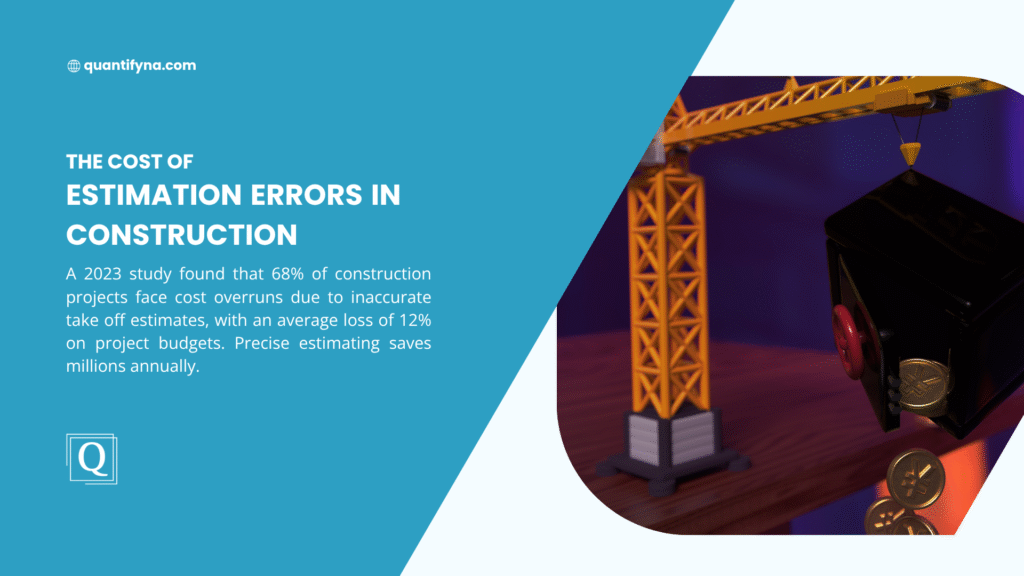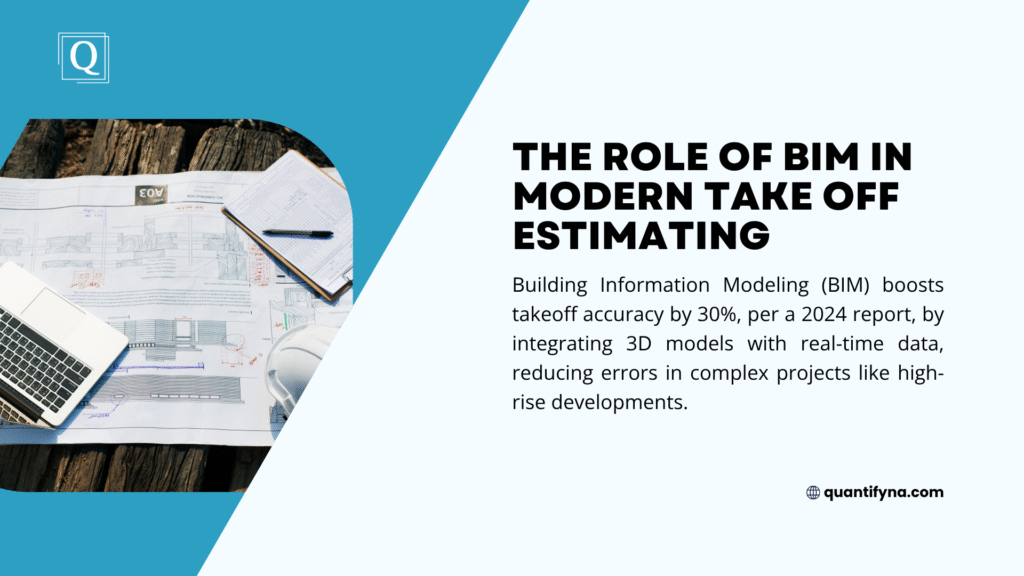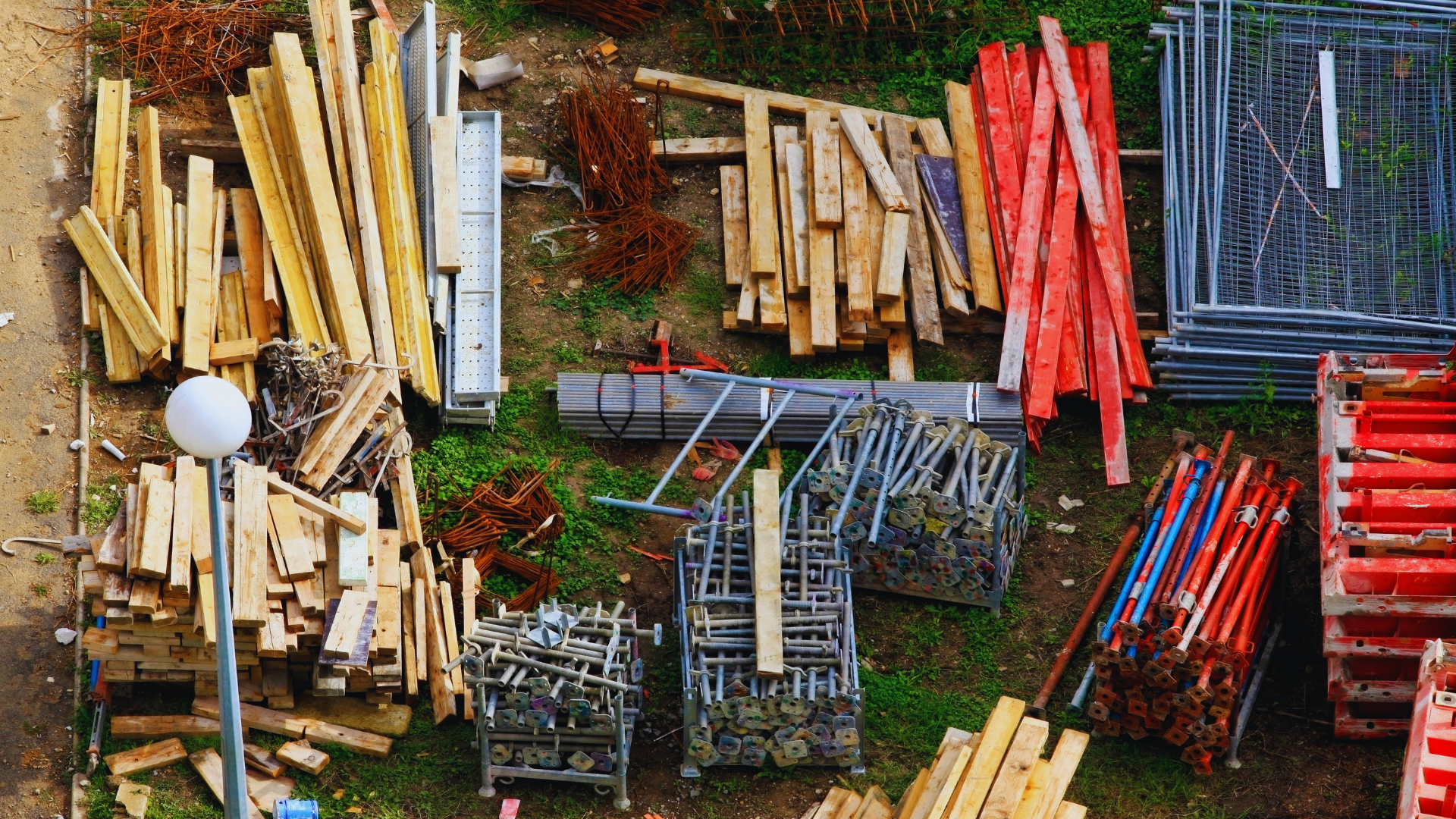Construction projects succeed or fail based on one critical factor that happens long before the first hammer swings – accurate take-off estimating. This process determines whether contractors make money or watch their profits disappear into cost overruns and material shortages.
Every experienced contractor has war stories about jobs that went sideways because someone miscalculated quantities during the bidding phase. Maybe it was 200 missing sheets of drywall, or underestimating flooring square footage by 30%. These mistakes turn profitable projects into financial disasters faster than anything else in the construction business.
Take-off estimating creates the foundation for every successful construction bid. Getting it right means smooth project execution and healthy margins. Getting it wrong leads to awkward conversations with clients about change orders and emergency material purchases that eat away at profits.
The Reality of Take-Off Estimating in Modern Construction

Building accurate estimates requires more than quick measurements and rough calculations. Successful contractors treat this process as the most important part of their bidding strategy because small errors compound into major problems once construction begins.
The process starts with a thorough document review. Construction plans contain countless details that affect material quantities and installation methods. Architects often scatter important information across multiple sheets, and missing even minor details can lead to significant cost impacts during construction.
Drywall estimating provides a perfect example of how complexity hides in seemingly simple tasks. Beyond basic wall measurements, estimators must account for ceiling heights, outlet locations, corner types, and access challenges. Each factor affects both material quantities and labor requirements.
Time pressure creates the biggest enemy of accurate take-off estimating. Rushing through measurements or skipping verification steps leads to the kinds of mistakes that turn winning bids into losing projects. The extra hour spent double-checking calculations costs far less than explaining material shortfalls to frustrated clients.
Building Blocks of Effective Take-Off Estimating
Let’s talk about how to build good blocks for good take-off estimating.
Measurement Techniques That Work
Different construction elements require specific measurement approaches. Lumber calculations differ from paint coverage estimates, and flooring measurements involve considerations that don’t apply to electrical work. Understanding these differences prevents the cross-contamination of measurement errors between trades.
Flooring estimating demonstrates how room geometry affects material requirements beyond simple area calculations. Complex room shapes, built-in features, and installation patterns all influence waste factors and material ordering. Rectangular rooms might need 5% waste allowance, while rooms with multiple angles could require 15% or more.
Material delivery logistics also impact take-off estimating accuracy. Third-floor installations might use the same material quantities as ground-floor work, but access challenges affect labor costs and potentially increase waste if materials must be hand-carried or cut to fit through narrow passages.
Labor Calculations Beyond Simple Time Estimates
Experienced estimators know that construction estimating involves much more than adding up material costs. Labor calculations separate professional estimators from those who struggle with consistent profitability.
Crew skill levels significantly impact productivity rates. Site conditions affect installation speed. Even seasonal factors influence labor efficiency – winter work often takes longer due to shorter daylight hours and weather challenges. Smart estimators adjust their labor calculations based on these real-world factors rather than relying on idealized productivity standards.
Technology Tools That Make a Difference

Digital measurement tools have revolutionized take-off estimating for contractors willing to invest in learning new systems. PDF measurement software eliminates scale ruler calculations and reduces arithmetic errors that can torpedo bids. These tools allow estimators to click and drag on digital plans while the software handles mathematical calculations automatically.
However, technology cannot replace job site knowledge and common sense. Walking actual project sites reveals conditions that don’t appear on construction documents. Access issues, existing conditions, and site logistics all affect estimates even when they’re not shown on architectural drawings.
The key lies in balancing digital efficiency with practical experience. Technology speeds up measurements and reduces calculation errors, but experienced judgment remains essential for interpreting plans and anticipating installation challenges.
Common Pitfalls in Take-Off Estimating
Now, here are some common pitfalls.
Document Interpretation Challenges
Construction documents come from human designers, which means they contain human errors. Dimensions that don’t add up, conflicting details between drawing sheets, and specifications referencing discontinued products all create estimation challenges that require detective work to resolve.
Painting estimating involves more than calculating wall areas. Existing surface conditions, required preparation work, and paint compatibility issues all affect material requirements and labor time. Estimators who only focus on coverage calculations miss significant cost factors that emerge during actual work.
Asking clarifying questions during the bidding phase prevents costly discoveries after contract signing. Better to request additional information upfront than deal with change order disputes later in the project timeline.
Waste Factor Miscalculations
Every construction material involves some level of installation waste. The challenge lies in determining appropriate waste percentages based on actual project conditions rather than generic industry averages.
Drywall takeoff calculations must consider factors beyond basic square footage measurements. Cut complexity, ceiling heights, material access, and installation sequence all influence waste generation. Projects requiring numerous cuts or dealing with non-standard dimensions typically generate more waste than simple installations.
Maintaining waste factor records from completed projects provides better estimation data than relying on published averages. Real project data reflects actual crew practices and site conditions that affect material usage patterns.
Adapting Take-Off Estimating to Different Project Types

Project delivery methods require different estimation approaches. Traditional design-bid-build projects provide complete drawings for detailed takeoffs, while design-build arrangements often require preliminary estimates based on conceptual information that gets refined as designs develop.
Construction takeoff processes for fast-track projects involve estimating work that isn’t fully designed yet. This requires flexible systems that can accommodate design changes without complete re-estimation. Clear documentation of estimation assumptions becomes critical so all parties understand what’s included in preliminary pricing.
Different project scales also demand different levels of estimation detail. Small residential projects might not justify the same detailed measurement processes used for major commercial developments, but the fundamental principles of accurate quantity calculation remain consistent across all project sizes.
Quality Control Systems That Prevent Costly Mistakes
Reliable take-off estimating includes multiple verification steps that catch errors before bid submission. Having different team members review calculations provides fresh perspectives that identify mistakes the original estimator might miss after hours of detailed work.
Comparing current project quantities against similar completed work helps identify unusual variations that might indicate estimation errors. Sometimes differences reflect legitimate project complexity, but they can also reveal calculation mistakes that need correction before bidding.
Establishing standard procedures for take-off estimating ensures consistency across different estimators and projects. These procedures should include documentation requirements, review processes, and approval workflows that maintain quality standards while meeting deadline pressures.
Integration with Pricing and Market Conditions
Converting accurate quantities into competitive bids requires understanding current material costs, local labor rates, and how overhead expenses fit into final pricing. Material prices fluctuate constantly, especially for commodities like lumber and steel. Fresh pricing quotes for major projects provide better accuracy than outdated cost data.
Parametric estimating techniques can validate detailed takeoff calculations by comparing results against historical cost-per-unit data from similar projects. Significant variations from expected ranges warrant additional review to ensure calculation accuracy.
Understanding local market conditions also affects pricing strategies. Labor availability, material delivery logistics, and regional construction practices all influence final bid amounts beyond basic quantity calculations.
Stop letting inaccurate estimates cost you money and clients.
Professional take-off estimating services from Quantifyna provide the accuracy and expertise needed to bid confidently on projects of any size.
Our experienced team understands the details that make the difference between profitable work and costly mistakes. Contact us today to discover how precise estimating can transform your construction business success.




